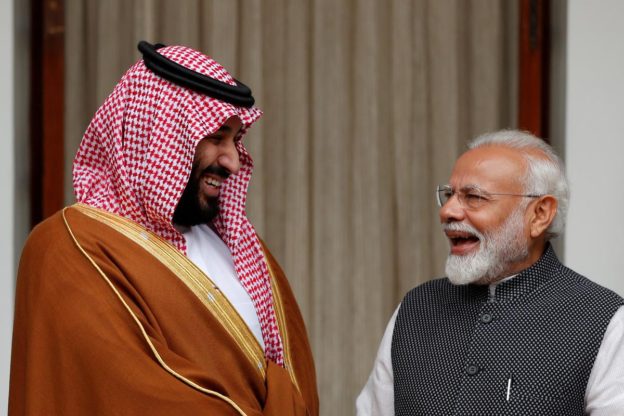The significance of this trade corridor can be attributed to its historical value, which is of fundamental importance.
On the sidelines of the G20 conference in New Delhi, Prime Minister Narendra Modi announced the establishment of the India-Middle East-Europe Economic Corridor (IMEEC) at the Bharat Mandapam Convention Centre. The project has been praised by global leaders as “historic,” “game-changing,” and a “landmark corridor.” Its main objective is to enhance connectivity between the three key areas of trade potential. IMEEC is an initiative intended to enhance connectivity and promote economic integration among South Asia, the Arabian Gulf, and Europe. The project will employ various transport modes and entail substantial infrastructure development such as ports, electricity cables, digital networks, and clean hydrogen pipelines. The project aims to enhance economic development and has received support from the United States and experts believe that it is a means to counter China’s increasing influence in the area. The significance of this corridor is based on its exceptional geographical location, which includes some of the most dynamic and resource-rich regions in the world. The route begins in India, a rapidly growing economy and home to more than a billion people. From there, it stretches across the energy-rich Middle East and extends into Europe, which has long been the historical epicenter of global power and commerce. The IMEEC serves as a vital link, connecting these regions not just physically, but also facilitating trade, investment, and cooperation on an unprecedented level. The significance of this trade corridor can be attributed to its historical value, which is of fundamental importance. According to Md. Muddassir Quamar, an Associate Professor at JNU, the Gulf region has historically served as a significant trade route connecting Asia and Europe, notably the Indian Ocean region and the Mediterranean Sea region.
The combined GDP of IMEEC is US$47 trillion, which accounts for nearly half of the world’s GDP. This signifies a remarkable growth force for the global economy. Furthermore, it is anticipated that this initiative will attract more Asian countries, which will improve manufacturing, food security, and other sectors. It has also the potential to encourage other countries within the Indo-Pacific region to enhance their collaborative ties with India and serve as a potential counterbalance to China’s increasing influence.
Experts in geopolitics believe that IMEEC presents a direct challenge to China’s Belt and Road Initiative (BRI) as it offers an alternative approach to promoting connectivity and economic integration between South Asia, the Arabian Gulf, and Europe. In addition to that the proposed corridor is supported by the United States and is considered a more sustainable and transparent option compared to BRI. It is anticipated that there will be competition between this initiative and BRI in terms of exerting influence and attracting investment in the region.
The Belt and Road Initiative (BRI) was established with the aim of enhancing China’s commercial presence by proposing to construct infrastructure that would link the mainland with Europe. Chinese companies and labour would be responsible for constructing the infrastructure, while Chinese banks would provide funding at varying interest rates. The primary beneficiaries of this infrastructure would be Beijing’s political and economic interests.
Both China’s BRI and the IMEEC are infrastructure development strategies that seek to promote connectivity and economic integration between different regions. However, both have differences in financing and governance. The IMEEC, which is supported by the United States, is expected to attract more Asian countries, emphasising the importance of transparency and sustainability. The project is anticipated to be funded through a combination of public and private investment and managed through a partnership between public and private entities. The BRI is supported by the Chinese government and has garnered substantial investment from Chinese companies and banks. The project has faced criticism due to its lack of transparency and governance. Concerns have been raised regarding corruption and the sustainability of the debt. The project is primarily overseen by Chinese state-owned enterprises and financial institutions.
How has China responded to the IMEEC?
China has expressed a positive response to the IMEEC, albeit with certain reservations. China has expressed its support for the IMEEC as a positive step towards enhancing regional connectivity and promoting economic integration. However, it has also raised concerns about the potential for the IMEEC to be used as a geopolitical tool. As mentioned above the IMEEC is considered a direct competitor to China’s BRI, and both initiatives are anticipated to compete for influence and investment in the region. Nonetheless, the IMEEC adopts a distinct approach compared to China’s BRI. Its priorities are the promotion of connectivity and economic integration among South Asia, the Arabian Gulf, and Europe. This initiative is widely regarded as a more sustainable and transparent alternative.
In conclusion, it can be stated that this corridor encompasses a complex network of economic, political, and strategic interests that possess the capacity to reshape the global economic and political landscapes. The impact of this cannot be underestimated, as it affects energy security, trade dynamics, and regional stability. Moreover, the IMEEC serves as a prime example of the wider trend of the East’s increasing impact on global affairs. This trend not only challenges the traditional dominance of the West and to some extent China but also contributes to the development of a multipolar world order.
https://www.financialexpress.com/business/defence-strategic-crossroads-exploring-the-geopolitical-dimensions-of-the-india-middle-east-europe-economic-corridor-3243568/





